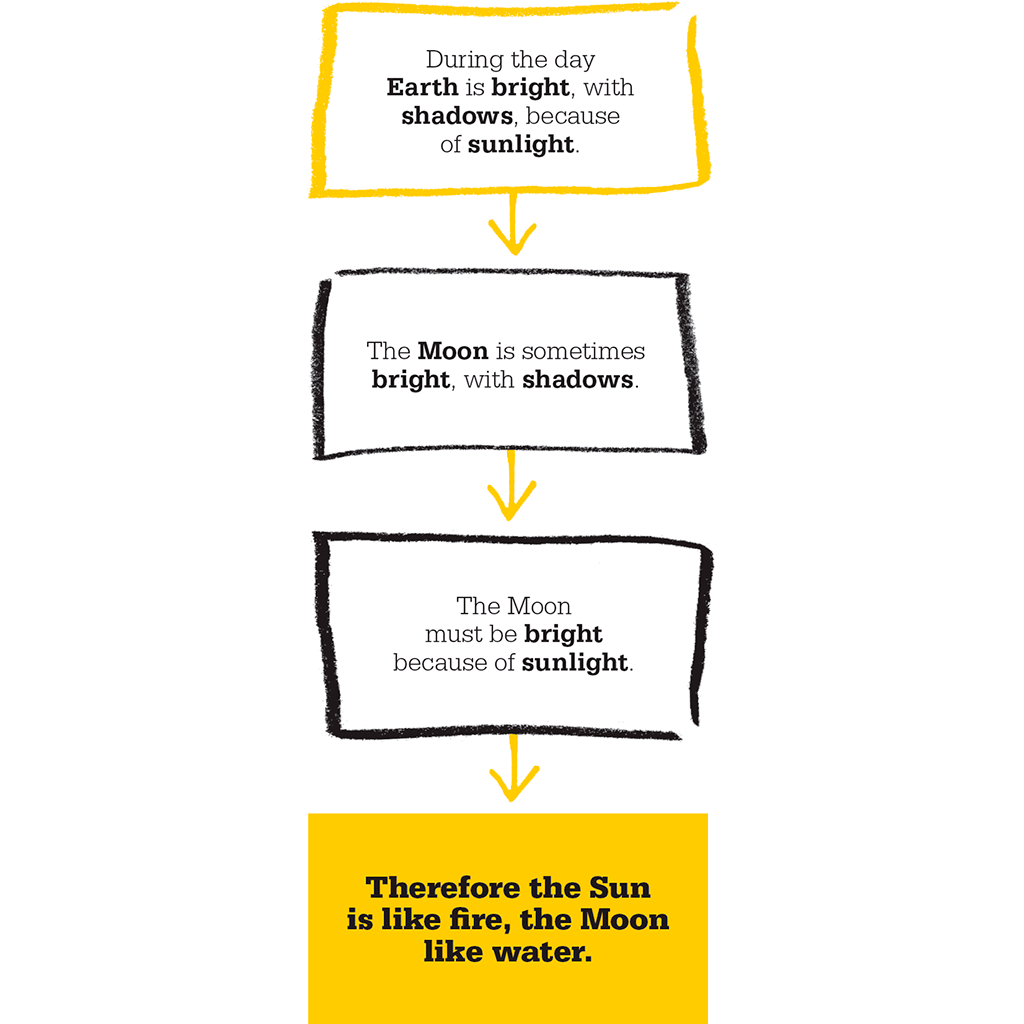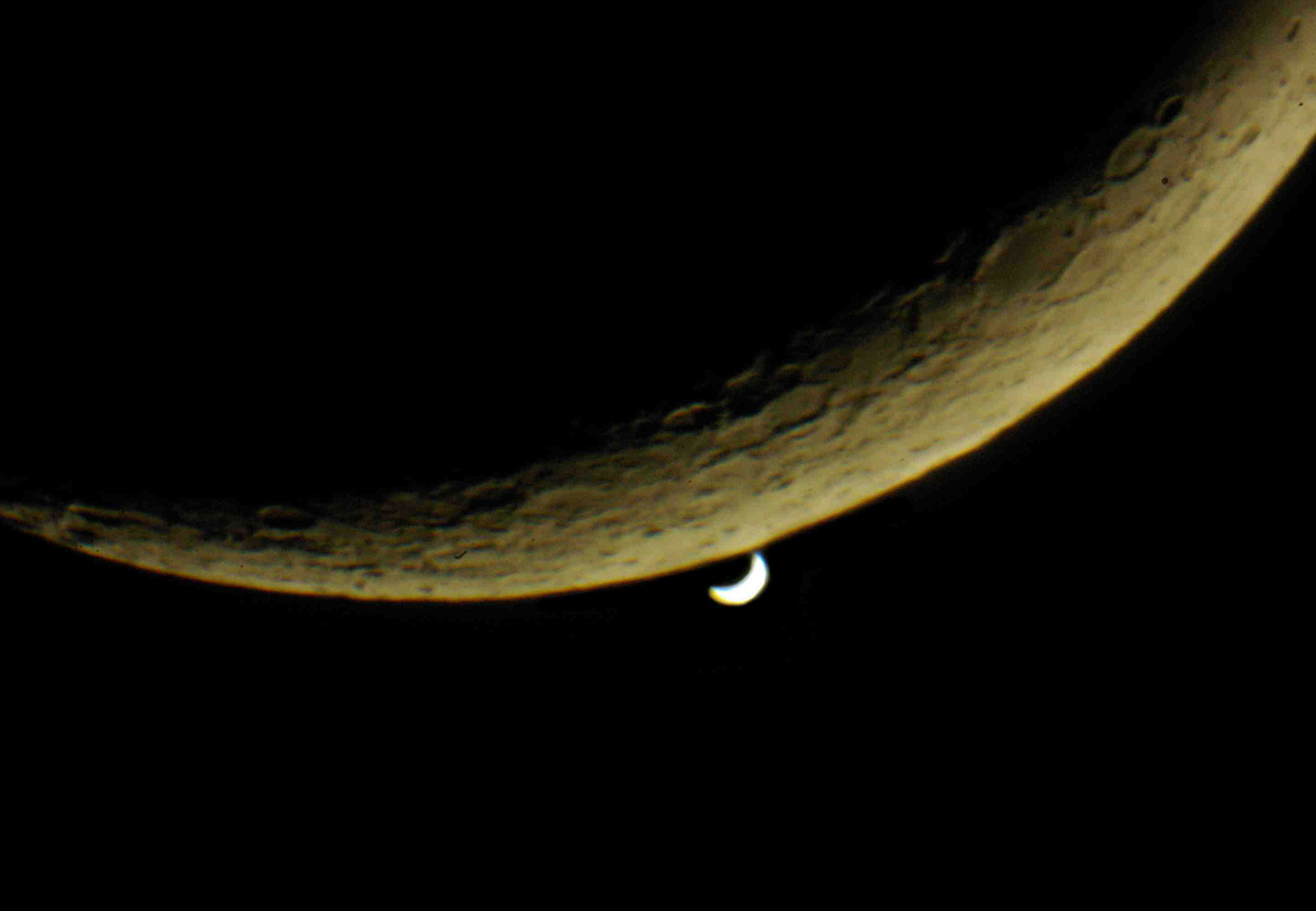
IN CONTEXT
Physics
140 BCE Hipparchus works out how to predict eclipses.
150 CE Ptolemy improves on Hipparchus’s work, and produces practical tables for calculating the future positions of the celestial bodies.
11th century Shen Kuo writes the Dream Pool Essays, in which he uses the waxing and waning of the Moon to demonstrate that all heavenly bodies (though not Earth) are spherical.
1543 Nicolaus Copernicus publishes On the Revolutions of the Celestial Spheres, in which he describes a heliocentric system.
1609 Johannes Kepler explains the movements of the planets as free-floating bodies describing ellipses.
In about 140 BCE, the Greek astronomer Hipparchus, probably the finest astronomer of the ancient world, compiled a catalogue of some 850 stars. He also explained how to predict the movements of the Sun and Moon and the dates of eclipses. In his work Almagest of about 150 CE, Ptolemy of Alexandria listed 1,000 stars and 48 constellations. Most of this work was effectively an updated version of what Hipparchus had written, but in a more practical form. In the West, the Almagest became the standard astronomy text throughout the Middle Ages. Its tables included all the information needed to calculate the future positions of the Sun and Moon, the planets and the major stars, and also eclipses of the Sun and Moon.
In 120 CE, the Chinese polymath Zhang Heng produced a work entitled Ling Xian, or The Spiritual Constitution of the Universe. In it, he wrote that “the sky is like a hen’s egg, and is as round as a crossbow pellet, and Earth is like the yolk of the egg, lying alone at the centre. The sky is large and the Earth small”. This was, following Hipparchus and Ptolemy, a universe with Earth at its centre. Zhang catalogued 2,500 “brightly shining” stars and 124 constellations, and added that “of the very small stars there are 11,520”.

"The Moon and the planets are Yin; they have shape but no light."
Jing Fang
Eclipses of the Moon and planets
Zhang was fascinated by eclipses. He wrote, “The Sun is like fire and the Moon like water. The fire gives out light and the water reflects it. Thus the Moon’s brightness is produced from the radiance of the Sun, and the Moon’s darkness is due to the light of the Sun being obstructed. The side that faces the Sun is fully lit, and the side that is away from it is dark”. Zhang also described a lunar eclipse, where the Sun’s light cannot reach the Moon because Earth is in the way. He recognized that the planets were also “like water”, reflecting light, and so were also subject to eclipses: “When [a similar effect] happens with a planet, we call it an occultation; when the Moon passes across the Sun’s path then there is a solar eclipse”.
In the 11th century, another Chinese astronomer, Shen Kuo, expanded on Zhang’s work in one significant respect. He showed that observations of the waxing and waning of the Moon proved that the celestial bodies were spherical.

The crescent outline of Venus is about to be occulted by the Moon. Zhang’s observations led him to conclude that, like the Moon, the planets did not produce their own light.
ZHANG HENG

Zhang Heng was born in 78 CE in the town of Xi’e, in what is now Henan Province, in Han Dynasty China. At 17, he left home to study literature and train to be a writer. By his late 20s, Zhang had become a skilled mathematician and was called to the court of Emperor An-ti, who, in 115 CE, made him Chief Astrologer.
Zhang lived at a time of rapid advances in science. As well as his astronomical work, he devised a water-powered armillary sphere (a model of the celestial objects) and invented the world’s first seismometer, which was ridiculed until, in 138 CE, it successfully recorded an earthquake 400km (250 miles) away. He also invented the first odometer to measure distances travelled in vehicles, and a non-magnetic, south-pointing compass in the form of a chariot. Zhang was a distinguished poet, whose works give us vivid insights into the cultural life of his day.
Key works
c.120 CE The Spiritual Constitution of the Universe
c.120 CE The Map of the Ling Xian
See also: Nicolaus Copernicus • Johannes Kepler • Isaac Newton